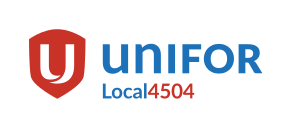The WHMIS label is one of the ways used to convey hazard information to users of the product. WHMIS law requires labels for hazardous products. Labels must identify the precautions to take when using the product and state that there is a Safety Data Sheet (SDS) available with more detailed information. Suppliers, employers and sometimes workers are all responsible for labelling products.
There are two different types of labels used in WHMIS:
- the supplier label,
- the workplace label.
Supplier Labels:
- Are provided or affixed (attached) by the supplier and will appear on all hazardous products received at a workplace in Canada (if the hazardous product is always used in the container with the supplier label, no other label is required).
- Must be written in English and French, and may be bilingual (as one label), or available as two labels (one each in English and French).
- Must include the following information:
- Product identifier – the brand name, chemical name, common name, generic name or trade name of the hazardous product.
- Initial supplier identifier – the name, address and telephone number of either the Canadian manufacturer or the Canadian importer*.
- Pictogram(s) – hazard symbol within a red "square set on one of its points".
- Signal word – a word used to alert the reader to a potential hazard and to indicate the severity of the hazard.
- Hazard statement(s) – standardized phrases which describe the nature of the hazard posed by a hazardous product.
- Precautionary statement(s) – standardized phrases that describe measures to be taken to minimize or prevent adverse effects resulting from exposure to a hazardous product or resulting from improper handling or storage of a hazardous product.
- Supplemental label information – some supplemental label information is required based on the classification of the product. For example, the label for a mixture containing ingredients with unknown toxicity in amounts higher than or equal to 1% must include a statement indicating the percent of the ingredient or ingredients with unknown toxicity. Labels may also include supplementary information about precautionary actions, hazards not yet included in the GHS, physical state, or route of exposure. This information must not contradict or detract from the standardized information.
Workplace Labels
- Must appear on all hazardous products in the following situations:
- for products produced on site
- when the product is transferred from one container to another
- when workers are unable to read English or French
- to replace labels that have been lost or damaged during transport
- Must contain:
- Product name (matching the SDS product name).
- Safe handling precautions, may include pictograms or other supplier label information.
- A reference to the SDS (if available).
Never use an unlabelled product, never assume you know what it is, and ask your supervisor to identify the contents and create a workplace label before using the product.

